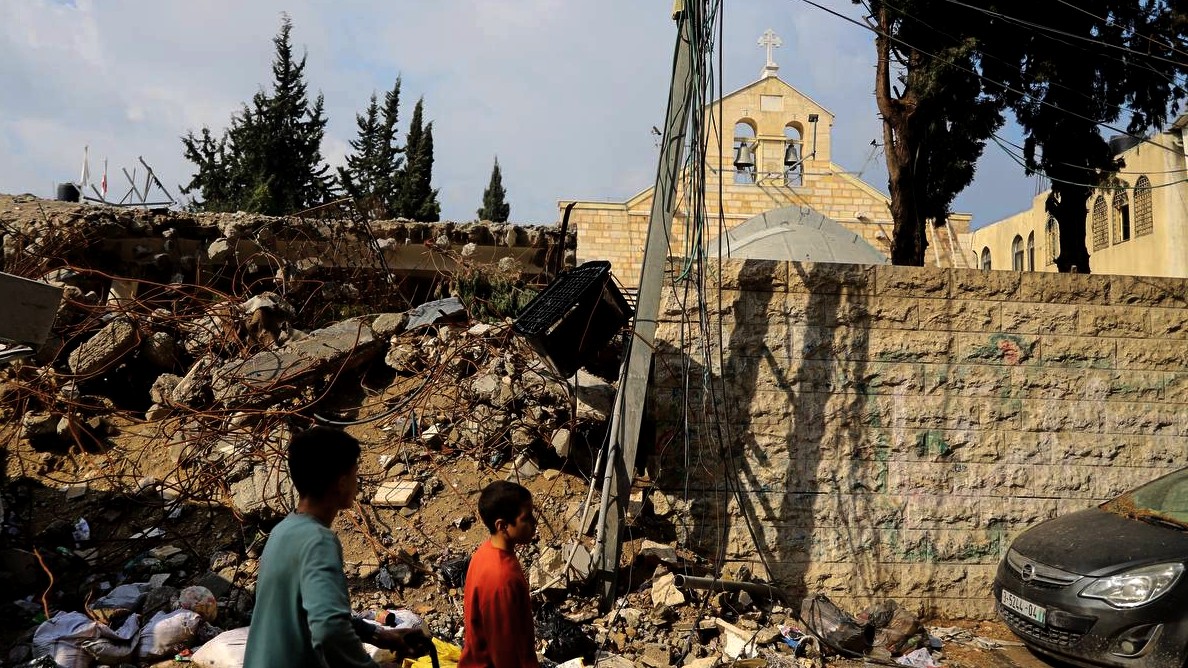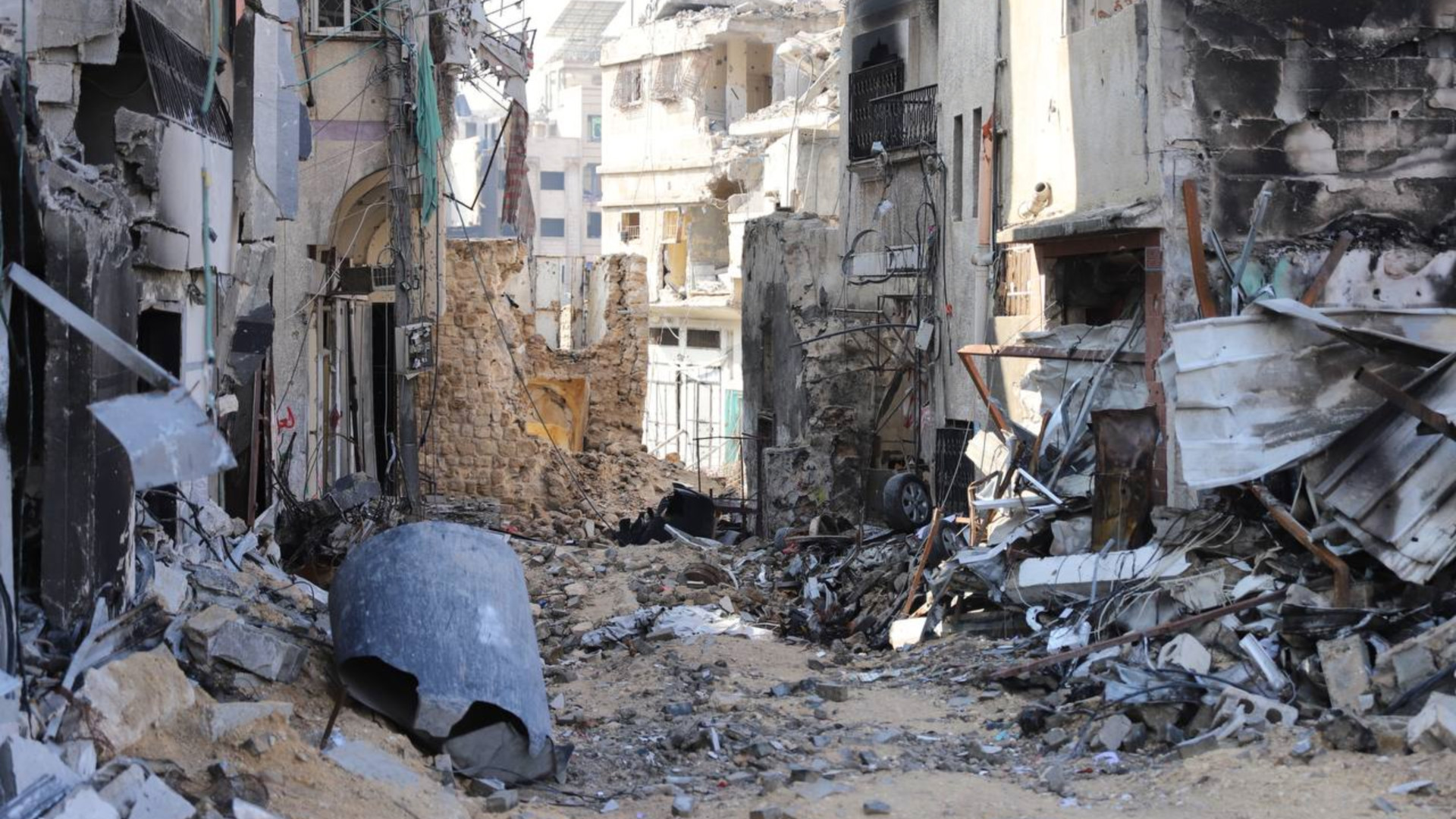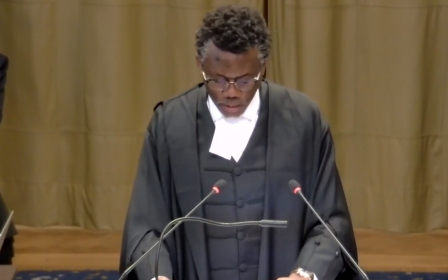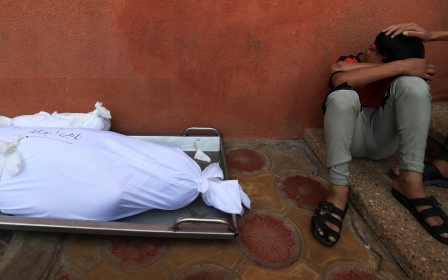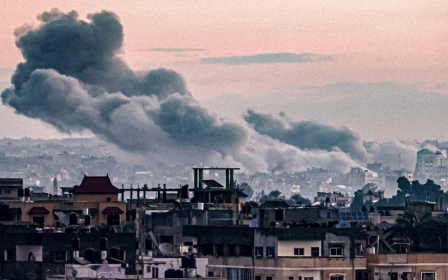Israel's war erases Gaza's religious and cultural heritage
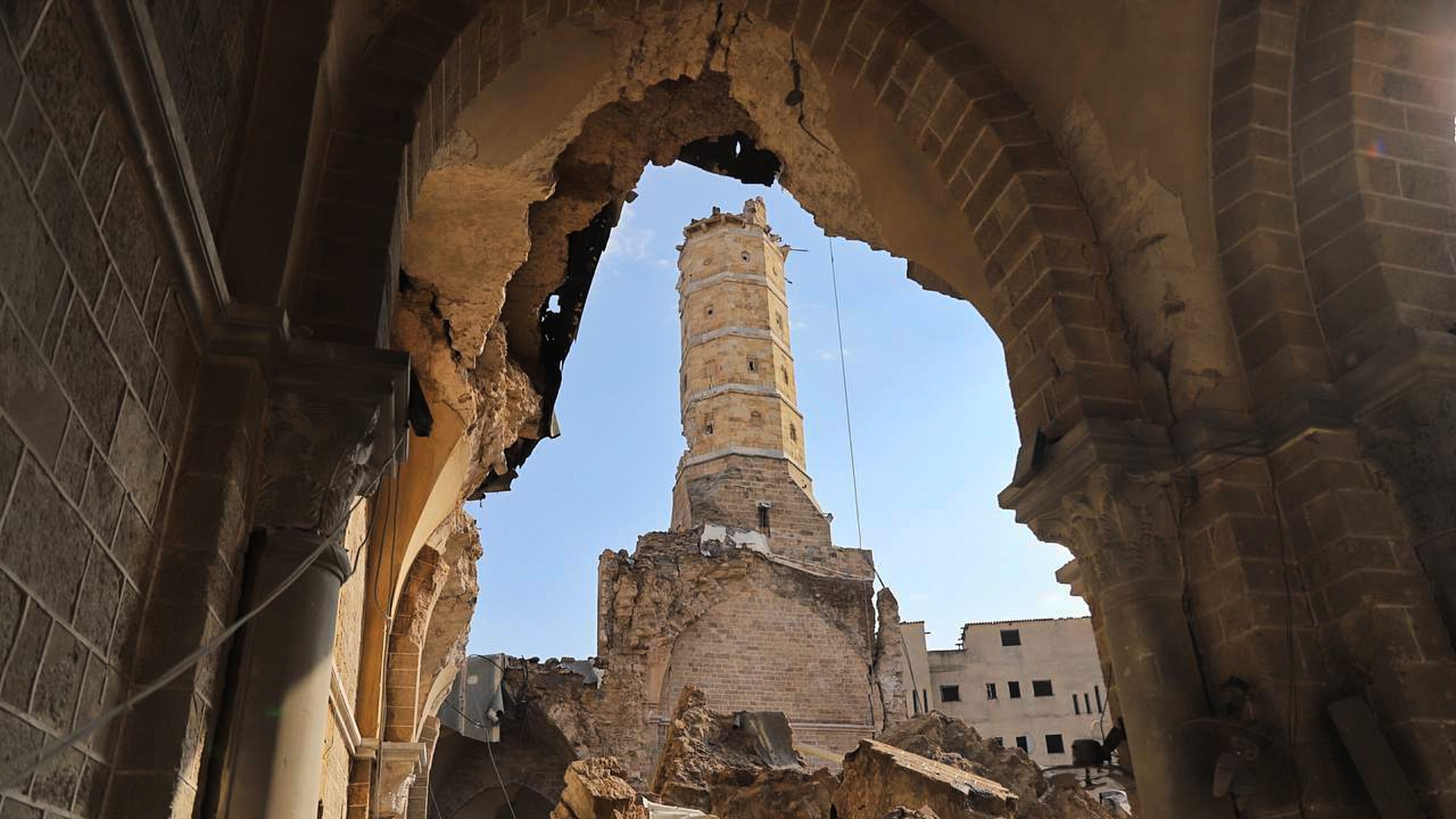
The material loss Palestinians in the Gaza Strip have suffered in three months of Israeli bombing is unprecedented. Not only have they lost their homes, entire neighbourhoods and civilian infrastructure, but residents say another "immeasurable damage that cannot be repaired" has been the erasure of Gaza's history.
Since the beginning of its war on Gaza on 7 October, the Israeli military has targeted and destroyed dozens of heritage sites, including historic churches and mosques, cultural museums, and archaeological structures that date back thousands of years.
Key religious sites have been a target for Israeli air strikes and artillery shelling across the different districts of Gaza. Many of those sites had been transformed into shelters for displaced Palestinians at the time of the attack, resulting in dozens of casualties.
On 18 October, the Greek Orthodox Church of Saint Porphyrius was damaged by an Israeli air strike on the adjacent 141-year-old Ahli Baptist Hospital, the oldest hospital in the strip.
Two days later, it was directly targeted by a strike that killed at least 16 people and wounded dozens others among the families who were taking refuge in the church.
New MEE newsletter: Jerusalem Dispatch
Sign up to get the latest insights and analysis on Israel-Palestine, alongside Turkey Unpacked and other MEE newsletters
Randa Arteen, a Christian resident of Gaza, said the church was one of the few religious sites where she and her community would pray and spend religious holidays since Israel does not grant them permits to travel to Bethlehem through the Beit Hanoun (Erez) crossing each year.
"The churches in the Gaza Strip are not many, but all of them are old and historic. So, if one church is destroyed, it is not actually one church, it is hundreds of years erased," the 53-year-old woman told Middle East Eye.
"Unlike any other churches, we had a special spiritual connection with the Greek Orthodox Church in particular. It is a symbol of Palestinian Christians in Gaza, and even across Palestine as well.
"We used to attend Christmas there and light up the tree along with the children every year. It is hard to believe that the few places available for Christians in Gaza are now destroyed."
The almost 900-year-old church, one of the oldest in the world, was one of three churches that were damaged across the strip.
'More than just a mosque'
In addition to churches, at least 114 mosques have been destroyed and 200 others have been damaged in Gaza, including the 13th century Othman Bin Qashqar Mosque in al-Zaytoun neighbourhood, south of Gaza City, and the medieval Great Omari Mosque, the largest and oldest mosque in Gaza, located in the heart of the Old Town east of Gaza City and dating back to the seventh century.
Om Ahmed al-Saqqa, 64, who lives in al-Shujaiyya neighbourhood, a few kilometres away from the Omari Mosque, said that she has prayed in the mosque since she was a child, especially during the Muslim holy month of Ramadan.
Currently displaced in Deir al-Balah in the central Gaza Strip after her house was severely damaged, Saqqa said she was more saddened by the destruction of the mosque than of her own home.
"I was born and have lived all my life in this neighbourhood. When I was around six years old, and throughout all my childhood years, my father used to take me and my siblings every night during Ramadan to perform the Taraweeh prayers in this mosque. I had my childhood and adulthood memories there," Saqqa told MEE.
"For us, Palestinians, it is more than just a mosque. It is our history and our present. When we talk about Gaza, we talk about the Omari Mosque. We believed that it would be impossible to harm such a place, not just because it was a holy site, but because of its rich history and importance for both Muslims and Christians around the world."
The mosque, which was converted from a Byzantine church, is considered one of the oldest in the world.
Close to the Omari Mosque lies Hammam al-Samra (the Samra Bath), a prominent and rare surviving example of an Ottoman architectural site in Gaza.
On 30 December, Israeli strikes directly hit the site, destroying Turkish-style features that date back over 1,000 years.
Saint Hilarion
In a report released by Heritage for Peace in November, documenting the impact of Israel’s war on Gaza’s cultural heritage, the organisation said at least 104 out of 195 architectural heritage sites that it counted in the coastal enclave were destroyed or damaged.
Since it is impossible to assess the damage on-site, the United Nations Educational, Scientific and Cultural Organisation (Unesco) experts say they have been remotely monitoring the situation "using satellite data and information transmitted to us by third parties, in coordination with its partners and UN agencies on the ground, and our office in Ramallah".
'It is hard to believe that the few places available for Christians in Gaza are now destroyed'
- Randa Arteen, Gaza resident
"Unesco has initiated early October remote monitoring of the damage. As part of this remote monitoring, [we are] particularly concerned about the situation of the ruins of Saint Hilarion, inscribed on the National Tentative List of World Heritage in 2012. These are the remains of one of the region's earliest Christian monasteries," a Unesco spokesperson told MEE, requesting anonymity.
The ruins of Saint Hilarion are part of the Tell Umm Amer site, located in the al-Nussairat camp in the central Gaza Strip. The site has been severely damaged by the Israeli bombing campaign.
"The conflict in the Gaza Strip has caused a serious humanitarian crisis affecting all aspects of civilian life. As stated publicly on several occasions, Unesco is gravely concerned about this impact on education, culture and the protection of journalists – the pillars of its mandate," he said.
"While humanitarian emergencies are a legitimate priority, the protection of cultural heritage in all its forms - as well as the protection of educational and media infrastructures - must also be ensured, in accordance with international law, which stipulates that cultural property is civilian infrastructure, and as such must neither be targeted nor used for military purposes."
War on the past, present, and future
Another notable casualty of air strikes in Gaza City was the Central Archive Building, which was destroyed on 29 November.
Run by the Municipality of Gaza, the building contained thousands of historical documents and national records about Gaza, dating back over 100 years.
In addition, at least three museums were destroyed or severely damaged, including the government-run Basha Palace Museum, which dates to the 13th century and was directly targeted.
'It is like they are launching the attacks with an intention of destroying not only our present and future, but also our past'
- Mohammed Abulehia, founder of Qarara museum
In Khan Younis, in the southern Gaza Strip, al-Qarara Cultural Museum was damaged multiple times by Israeli air strikes on adjacent homes.
Mohammed Abulehia, who established the museum in 2016, says explosive barrels were dropped on the neighbourhood and in its vicinity, severely damaging the building and the collection.
"The museum contained a collection of over 5,000 assets, including antiquities and items that date back to the Canaanite period. I collected them and put immense efforts to establish the museum to protect and preserve the heritage of Gaza," Abulehia told MEE.
"Israeli occupation forces dropped heavy bombs on a home very close to the museum. Due to the massive explosion and the air pressure, the museum was severely affected, and many items were destroyed or lost."
Abulehia, who is not able to reach the museum to inspect the damage due to displacement, says he expects to return to find it completely or severely damaged.
"Following the first attack, I am sure that multiple other attacks have damaged the museum again. However, I cannot currently reach it since I have been displaced to Rafah.
The situation in Khan Younis and in the area where the museum in particular is located is very dangerous, he added. "It has been under intense Israeli air strikes and artillery shelling for weeks. No one can reach it."
Abulehia said the damage from the war has been immense, on all levels of Gaza's society, both material and moral.
"It is like they are launching the attacks with an intention of destroying not only our present and future, but also our past."
This article is available in French on Middle East Eye French edition.
Middle East Eye delivers independent and unrivalled coverage and analysis of the Middle East, North Africa and beyond. To learn more about republishing this content and the associated fees, please fill out this form. More about MEE can be found here.


